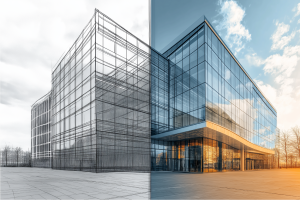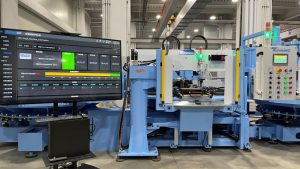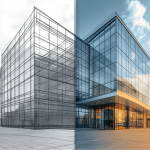Introduction to Urban Real Estate Trends
Urban areas worldwide are undergoing a remarkable transformation in their real estate landscapes. As cities expand and evolve, the forces shaping urban real estate trends become increasingly complex and interconnected. From Inner Loop Houston real estate team City Brix Realty to major cities globally, understanding these changes is crucial for various stakeholders, including developers, investors, and policymakers.
Houston real estate teams are known for their collaborative approach, combining the expertise of agents, marketing professionals, and administrative support to deliver seamless service. These teams often specialize in various market segments, such as luxury homes, first-time buyers, or investment properties, ensuring clients receive tailored guidance. With deep knowledge of the local market, Houston real estate teams excel in navigating the city’s diverse neighborhoods and rapidly changing trends.
Today’s urban environment reflects a blend of sustainable living practices and cutting-edge technology. These trends reshape how properties are bought, sold, and inhabited. While the need for housing remains constant, the modes of living and types of dwellings in demand are changing in response to societal shifts.
Shifting Demographics and Housing Needs
The demographic structure of urban centers is shifting rapidly, and these shifts have profound implications for real estate markets. Millennials and Gen Z are increasingly flocking to urban hubs, attracted by employment opportunities, cultural experiences, and social vibrancy. This population influx results in a demand for diverse housing solutions. Many of these individuals prefer compact, affordable living spaces that are conveniently located near public amenities and transportation corridors.
In response, property developers are exploring new residential formats such as micro-apartments, co-living spaces, and mixed-use developments that combine residential, commercial, and recreational facilities. These formats cater not only to younger demographics but also to downsizing retirees seeking convenience and community.
Sustainable Architecture and Green Buildings
As awareness of environmental issues grows, sustainable and eco-friendly architecture has become a pivotal component of urban development. The demand for buildings that minimize energy consumption and carbon emissions is gaining momentum. Green buildings are no longer seen as niche products; they are increasingly mainstream, providing healthier living environments while conserving natural resources.
The benefits of sustainable architecture extend beyond environmental impact. Green buildings often result in lower utility bills and increased marketability. They contribute to urban resilience by improving air quality and minimizing the heat island effect, as well as a rise in temperature in metropolitan areas compared to their rural surroundings. The trend toward sustainable building practices is transforming urban landscapes globally, reflecting a commitment to future generations.
The Role of Technology in Property Transactions
Technological advancements have revolutionized how the real estate industry operates, particularly in urban settings. Innovations such as virtual reality, artificial intelligence, and blockchain are reshaping property transactions, making them more transparent, efficient, and accessible.
Virtual property tours, for example, allow potential buyers to view homes remotely, saving time and resources. Blockchain technology is being tested in some markets to streamline the buying process, ensuring secure and tamper-proof transactions. Technology is not only transforming real estate itself but also the broader urban experience by enhancing information availability and simplifying complex processes.
Challenges Facing Urban Real Estate
Despite abundant opportunities, urban real estate faces significant challenges that merit attention and action. Chief among these is housing affordability, a persistent issue as urban populations surge and property values climb. Many urban centers struggle to balance supply and demand, leading to financial strain for both buyers and renters.
Additionally, regulatory and infrastructural complexities often obstruct development progress. Stringent zoning laws and lengthy approval processes can delay projects, while outdated infrastructure may not accommodate the rapid pace of urban expansion. Tackling these urban real estate challenges requires concerted efforts from government, industry, and community stakeholders.
Real Estate Investment Opportunities
The urban real estate market presents diversified investment prospects, though they require strategic insight and agility. Investors who understand and anticipate market trends can capitalize on opportunities ranging from small-scale ventures in emerging neighborhoods to large developments that redefine city skylines.
Investment in green buildings, along with properties supporting technological innovation, represent promising areas for growth. Those who can adapt to evolving needs and preferences will find themselves well-positioned to achieve impressive returns in the urban real estate sector.
Impact of Government Policies and Incentives
Government policies and incentives have a profound impact on urban real estate dynamics, shaping everything from zoning laws to tax structures. Programs promoting eco-conscious construction and affordable housing reflect the public sector’s role in fostering sustainable urban development.
Policies that provide incentives for innovation in energy efficiency or support for public transportation infrastructure can significantly influence the viability and attractiveness of urban real estate projects. As policymakers continue to craft initiatives responsive to public and environmental needs, the real estate market will evolve accordingly, offering fresh opportunities for growth.
Conclusion: The Future of Urban Real Estate
Urban real estate stands at the cusp of transformation as cityscapes adapt to modern challenges and opportunities. The trends explored herein amplify the necessity for flexibility and innovation in addressing the complexities of urban environments. From integrating technology to fostering eco-friendly development, navigating this evolving landscape requires a proactive and informed approach.
As demographics shift, technologies advance, and environmental demands increase, urban real estate will continue to evolve, offering potential for growth and development that aligns with the needs of future generations.











